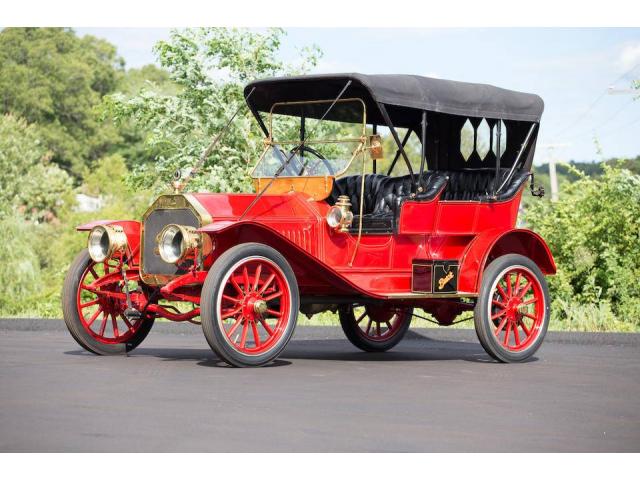1910 Buick Model 16 Toy Tonneau
- Brand: Buick
1910 Buick Model 16 Toy Tonneau
The Buick Motor Company was founded by David Buick in 1903 who quickly found himself in financial problems. William Crapo Durant gained control of the company which was beneficial for the company, as sales, production, and profit greatly increased. In 1908, Buick became a founder member of the General Motors Corporation. This was the same year the Model 10 Buick was introduced. It carried a price tag of $900 which included Buick Gray paint scheme, oil side and tail-lights, acetylene headlights, and bulb horn as standard. The top was optional and cost an additional fee. In total, over 4000 examples were produced in its first year, providing Buick and General Motors with financial prosperity.
In 1909 Buick extended the chassis length to 92 inches. The number of bodystyles and sale also increased, reaching 8,100 units produced. By 1910, Buick was offering the Model 10 in 13 different body styles. The side-mounted spare and a windshield remained as optional equipment.
Production would last until 1910 with a total of 23,000 units being produced.
By 1911 the company founded by David Dunbar Buick, the Buick Manufacturing Company of Flint, Michigan, was an important player in the US auto industry both in sales numbers and success in competition. After going through numerous reorganizations and changes of management, Buick had really stepped up its game with the involvement of super-salesman William C. Durant in 1904. Durant used Buick as one of the cornerstones of his new General Motors Corporation, and it remains so today.
Buick produced 29,425 units in the calendar year 1910, making it one of the industry's major producers. The 1910 Buick line was wide-ranging: from a tiny 2-cylinder chain-drive roadster through 10 different series and models, all of those being larger automobiles with 4-cylinder engines. The Model 16 represented the mid-priced 4-cylinder offering. Its cast-iron engine block was of 318 cubic inch displacement (4½ x 5" bore and stroke) and developed 48bhp. The healthy sized engine in the relatively light chassis displayed very good power and performance for its size. It featured mechanical valve lifters and a single Stromberg carburetor. There was shaft drive from the 3-speed transmission and a multi-disc clutch to the rear axle. Steering was by worm and nut. A top and windshield were optional.
Descriptions & pictures by conceptcarz & flynwheels & flickr & rmsothebys & other
| Specification | |
| Production Start | 1910 |
| Country of origin | USA |






















